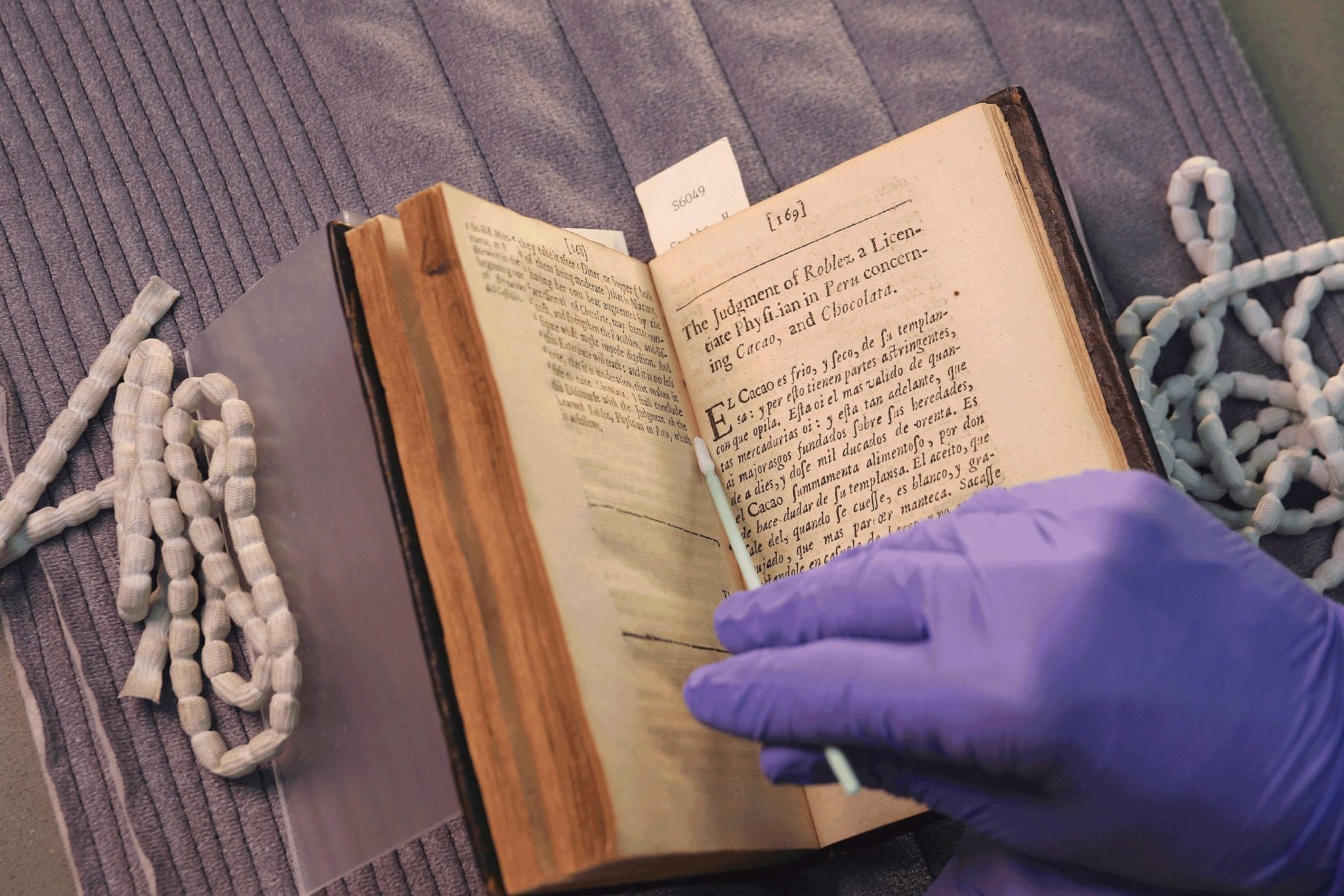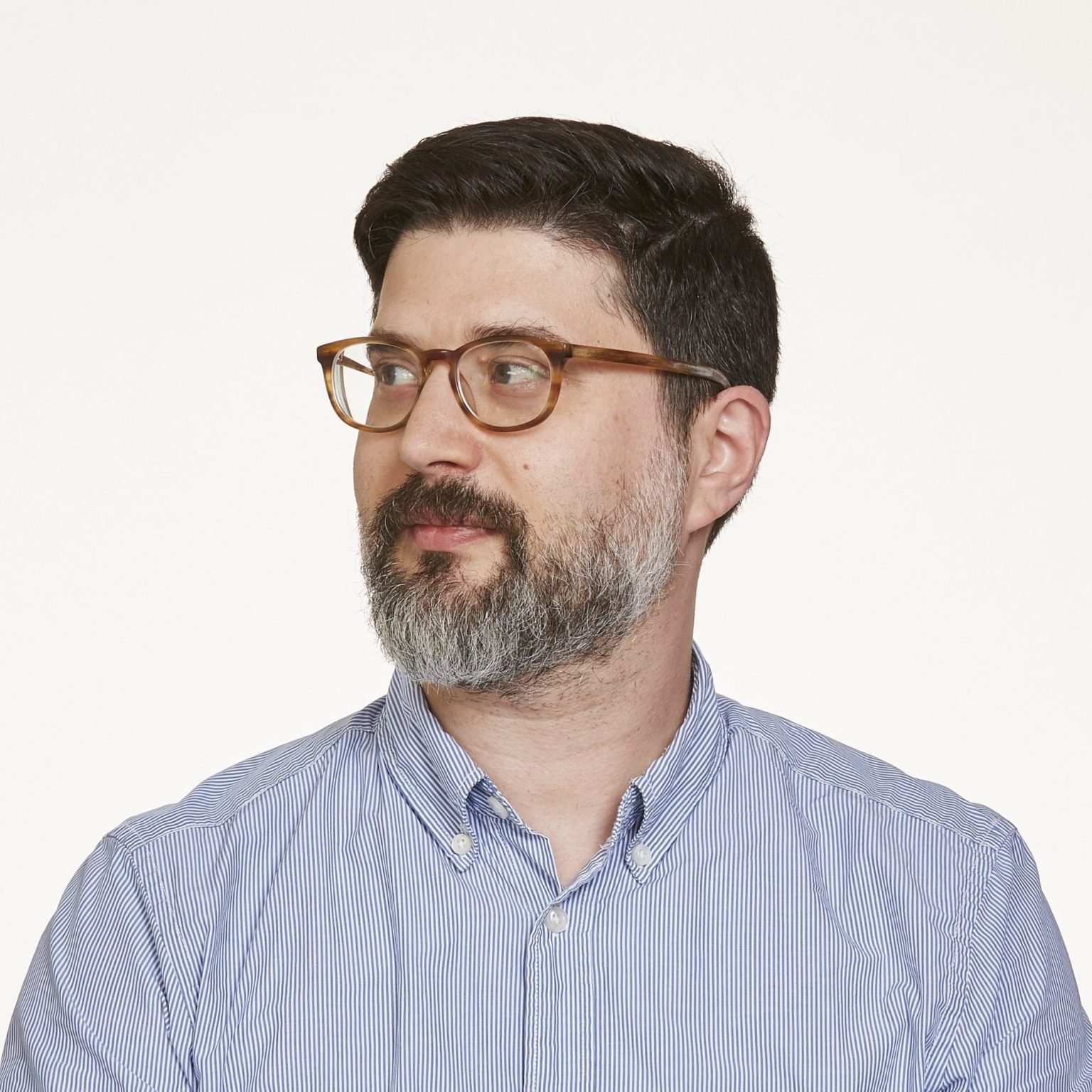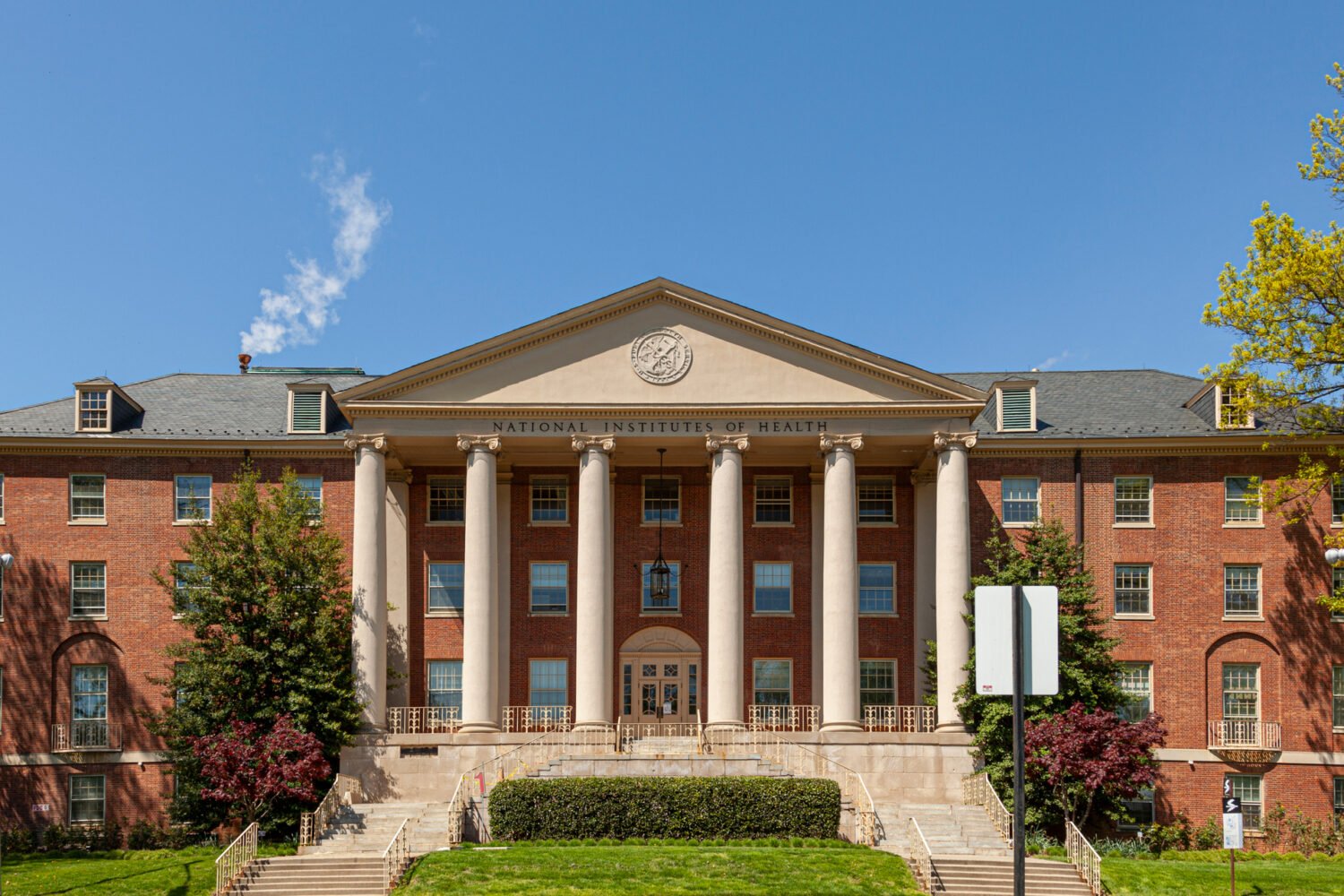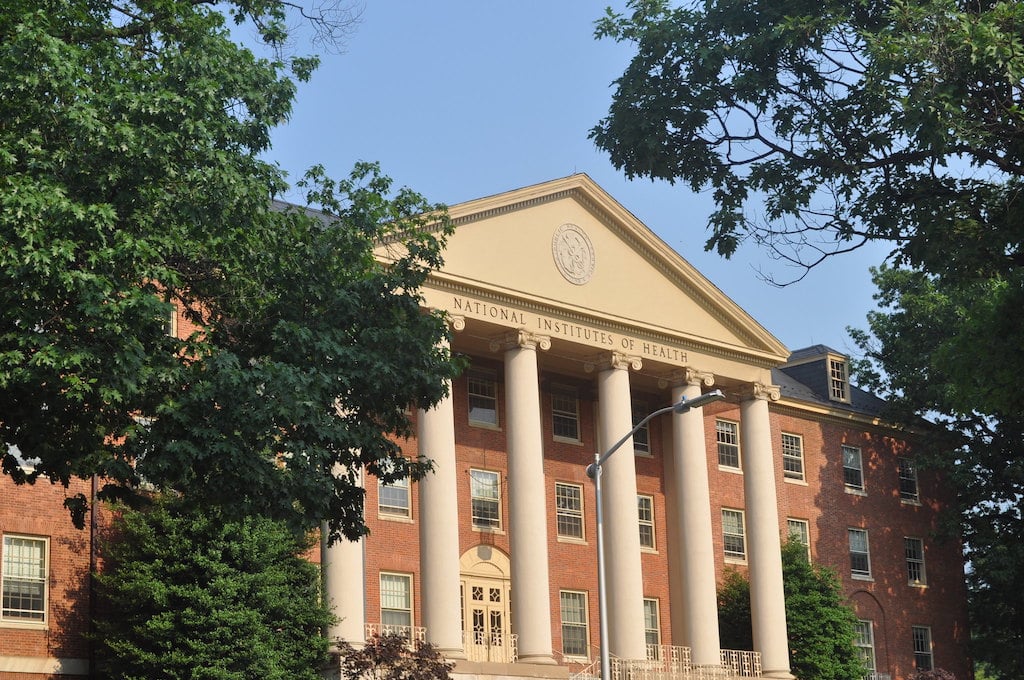The Folger Shakespeare Library’s underground storage facility stretches a full block beneath the building, protected by a nine-inch-thick steel bank-vault door. It houses about 260,000 historically significant books, along with manuscripts, documents, and even costumes saved from 19th-century productions. But could the Capitol Hill research library—the largest collection devoted to the Bard in the world—also contain, quite literally, Shakespeare himself?
That possibility is the longest of long shots, but it’s one potential outcome of an ongoing effort at the Folger dubbed Project Dustbunny—so named because it involves analyzing human DNA and proteins harvested from dirt inside the Folger’s old books. Some microscopic bits could, in theory, have once dropped off of Western literature’s greatest genius, preserved for hundreds of years without anyone knowing they were there. So far, the results of Project Dustbunny have been much less dramatic. The experiment started in 2015, when the library asked NIH geneticist Julie Segre to test some gunk scraped out of a 400-year-old Bible in its collection. The process took almost a year, but eventually Segre was able to sequence mitochondrial and microbial DNA found in the sample. The person it belonged to was from Northern Europe, she determined, and had skin bacteria consistent with acne.
These were obviously not foundation-shaking discoveries. But while nobody much cares that a spotty European once dropped a skin flake into an old religious book, the fact that any concrete information could be extracted from centuries-old gutter dust was a revelation. “Just the answerability of some questions gets people excited,” says Folger director Michael Witmore. “It gets me excited. We don’t know everything yet. I want to always be learning that there’s more to know.”
What else can be determined from swabbing books? We’re only just beginning to find out. But the idea is irresistible: Beyond the meanings of the words, we’re now realizing that books can communicate in a whole other previously secret language, potentially offering insights into people who interacted with them centuries ago—reams of invisible data right there on the page, waiting to be unlocked by science and human ingenuity. “The answer was staring you in the face,” says Witmore. “Literally, you were looking at it.”
I met up with Witmore one afternoon in his wood-paneled office across the hall from the Folger’s famous reading room. He was dressed in a dark suit and anonymous tie, looking every bit the conservative custodian of a world-renowned highbrow cultural institution. But when he started talking, a different guy emerged—an affable educator with the contagious enthusiasm of your favorite professor back in college.
Sure enough, Witmore spent 12 years in front of a classroom, including a nine-year stint teaching Shakespeare at engineering-heavy Carnegie Mellon University in Pittsburgh. That’s where he first got intrigued by the idea that science can inform our understanding of the humanities. He started exploring statistics and machine learning, which eventually led to a project using computer-based textual analysis to find patterns in Shakespeare’s plays. Comedies, he discovered, tend to use words like “I” and “you,” while histories rely more on “the.” (The reasons for this are interesting but too complicated to get into here.)
“As a result of that,” Witmore said, “I realized there are things you can learn with the help of quantitative analysis and computers. Experts who are really different from me could teach me things about my own field that I never would have looked for. I found that startling. That led me to try and keep an open mind about what we could learn from our colleagues in the sciences.”
In 2011, Witmore was picked to run the Folger, and a few years later he attended a lecture by archaeologist Turi King about her use of DNA to identify the remains of Richard III. Witmore started wondering if something similar could be attempted with his library. “I thought: Oh! People use these books, they close them, they put them on a cool bookshelf, and they don’t disturb it. It’s a perfect DNA storage system.” He called King and arranged a meeting, which led to the idea for Project Dustbunny.
That was the beginning of a process that has been ramping up ever since. Now Witmore and his team are trying to figure out where to go with the idea—and what the larger implications might be. “When we got that e-mail from Julie Segre [with the results], we realized, okay, now we know a couple of things that we didn’t know before,” Witmore said. “First, books store DNA. Second, we can recover the DNA. And third, we should not throw the DNA away.”
Recently, I got to watch the Folger’s head of conservation, Renate Mesmer, not throw the DNA away from a 16th-century book by English theologian Edmund Bunny. (His surname is just a coincidence; Project Dustbunny was named years before this book came through the lab.)
Mesmer snapped on a pair of blue gloves, placed the tome in a holder so it lay open, and ran a swab down the inside of the spine. Then she stuck the swab into a clear vial and assigned a number. “So that’s that,” she said. The dust will now be stored in what’s called a bio-archive, where it will sit until such time as science finds a suitable use for it. It’s a simple process, but “it makes us look at our vault in a whole new way,” says Heather Wolfe, the Folger’s curator of manuscripts. “It’s not just a collection of texts but this biological archive that we need to preserve for future research we can’t even conceive of.”

With the new procedures in place, the Folger team is contemplating the next step. One promising direction is proteomics, the study of old proteins. The institution has teamed up with a British archaeologist named Matthew Collins, who specializes in this field. In late May, he’ll travel to the library for a conference with around 20 other experts who will try to decide how best to test the Folger’s collection.
One likely area of study is biological matter found in parchment, which could reveal information about how early Printing worked and its broader impact on Europe. (“We geek out over the deep historical processes of text creation,” says Wolfe.) Researchers are also intrigued by the possibility of testing wax seals, because wax had to be kneaded between the user’s fingers to soften it, likely leaving human residue. In Witmore’s world, even small discoveries are a big deal. “Any new empirical fact about Shakespeare has extraordinary value,” he says.
But right now, the biggest priority is just not to mess anything up. “We don’t want to dig through Troy on our way down to some earlier civilization,” says Witmore, referring to Heinrich Schliemann’s efforts to excavate the Trojan ruins in the late 19th century. With modern archaeology in its infancy, Schliemann misjudged how deep the Iliad-era city would be. Instead of unearthing the incalculably historic site, he basically destroyed it.
Witmore’s job is to think about the past, but in more contemplative moments he also likes to dream about the future. “There’s a tantalizing, almost science-fiction possibility that is well outside of the realm of probable,” he said at one point during our conversation. His idea: What if the Folger could one day maintain a reference library containing DNA from descendants of key historical figures relevant to the library’s work? If samples from relatives of Queen Elizabeth, Francis Bacon, Christopher Marlowe, and, yes, William Shakespeare were on file, they could be compared to whatever is found in the library. “Because at some point,” Witmore said, “you might find a match.”
The Folger does own several objects that Shakespeare probably touched, such as his copy of the deed to the Blackfriars Gatehouse. There’s a remote chance that biological material collected from one of these objects could someday be identified as having come from the Bard’s body.
Wolfe is especially skeptical of this idea; when I met up with her in the conservation lab, before I could even ask about it, she volunteered her lack of enthusiasm for such efforts. “The first thing to say,” she told me, “is our goal isn’t necessarily to identify a famous person who has touched an item. But that’s the thing people are most interested in: Did Shakespeare hold this book?”
She’s right, the fantasy is seductive—even for Witmore. The director has actually thought about what he would do should that scenario ever occur. “If we verified that we had a sample of Shakespeare’s DNA, I think we would just . . . stop,” he said when we spoke in his office. “I don’t think the museum and humanities community, the community of scientists, really understand . . . .”
He paused, considering his words. “What would you do with the information in the genome of a dead genius? What’s the impact of that? What’s the reason to try and find that information, and what’s the reason not to? We need to prepare for a future in which it’s possible for people to ask those questions and face those choices, which is why this little experiment with a cute name actually points us at profound issues that we’re going to need to wrestle with as custodians of a very important historic collection—and also just as human beings.”
Yes, it’s exciting to learn new things from a swipe of centuries-old grit harvested from the crack of some 16th-century text. But it also should make us consider where this all leads. “How much,” Witmore asked, “do we want to know?”
This article appears in the May 2019 issue of Washingtonian.




















